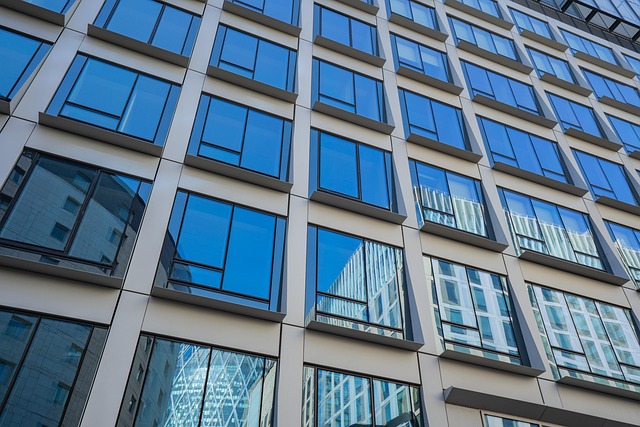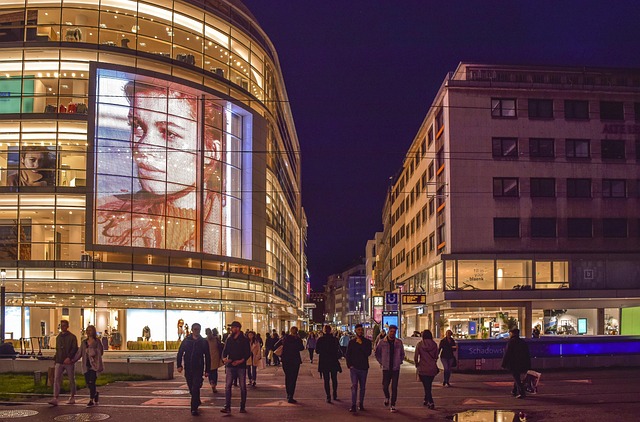Destratification fans are high-velocity ceiling-mounted devices that disrupt thermal stratification, redistributing air layers and enhancing HVAC efficiency. By seamlessly blending warm and cool air, these advanced fans eliminate hot spots, improve indoor comfort, and offer significant energy savings in industrial cooling environments. Future trends include smart sensors for real-time adaptation, improved air mixing technologies, sustainable materials, and optimized designs to further enhance destratification processes.
In today’s quest for optimized environmental control, high-velocity destratification fans are revolutionizing air management. This article explores the seamless blending of air layers through these advanced devices, offering a deeper understanding of destratification—its process and benefits. We dissect how high-velocity fans disrupt traditional air stratification, delve into key system components, and highlight diverse industry applications. Furthermore, we glance into future trends, promising enhanced efficiency in destratification fan technology.
- Understanding Destratification: The Process and Its Benefits
- How High-Velocity Fans Disrupt Traditional Air Stratification
- Key Components of a High-Performance Destratification System
- Applications: Industries Leveraging Seamless Air Mixing
- Future Trends in Fan Technology for Efficient Destratification
Understanding Destratification: The Process and Its Benefits

Destratification, a process that involves breaking up and redistributing stratified layers of air within a space, is achieved efficiently by high-velocity destratification fans. These specialized fans are designed to mix air layers seamlessly, eliminating temperature variations and ensuring even heat distribution. By addressing thermal stratification—the separation of warm and cool air due to density differences—destratification fans play a crucial role in enhancing HVAC (heating, ventilation, and air conditioning) efficiency.
The benefits of destratification are manifold, including significant energy savings, improved indoor comfort, and enhanced commercial applications. Ceiling-mounted destratification fans facilitate warm air redistribution, preventing the concentration of hot or cold spots. This technology is particularly useful in industrial cooling environments where maintaining optimal temperature control is essential for worker safety and productivity. Efficient air circulation brought about by these fans contributes to better overall HVAC performance, making them a valuable tool for achieving comfort and energy efficiency.
How High-Velocity Fans Disrupt Traditional Air Stratification

High-velocity destratification fans challenge traditional air stratification by redistributing warm air evenly throughout a space. Unlike standard ceiling mounted fans that create gentle, diffused air currents, destratification fans generate powerful, high-speed streams of air designed to disrupt settled temperature gradients. This intense air circulation promotes rapid warm air redistribution, erasing the demarcations between cool and hot zones often found in large, industrial or commercial spaces with inadequate HVAC efficiency.
By leveraging advanced air mixing technology, these fans efficiently combat thermal stratification, a phenomenon that can lead to significant energy savings. In industrial cooling scenarios, for instance, high-velocity destratification fans optimize temperature control by eliminating stagnant pockets of warm air. This not only enhances comfort for occupants but also reduces the workload on HVAC systems, leading to lower operational costs and improved overall facility management.
Key Components of a High-Performance Destratification System

The heart of a high-performance destratification system lies in its key components, each playing a crucial role in achieving optimal air circulation and temperature control. At the forefront are destrativication fans, specifically designed to disrupt thermal stratification by seamlessly blending warm and cool air layers throughout a space. These fans, often ceiling mounted, utilize advanced air mixing technology to ensure uniform distribution of cooling or heating, thereby enhancing HVAC efficiency.
Complementing these fans is a strategic arrangement of vents and diffusers that facilitate precise control over air circulation patterns. By redirecting warm air downwards and pulling in cooler air from above, this system prevents the formation of hot spots and ensures a comfortable environment, even in large commercial spaces or industrial cooling applications. The end result? Not only energy savings but also an improved indoor climate that benefits both occupants and equipment.
Applications: Industries Leveraging Seamless Air Mixing

The innovative use of high-velocity destratification fans is transforming various industries by offering efficient solutions to thermal stratification challenges. These powerful tools seamlessly blend air layers, ensuring optimal air circulation and temperature control across large spaces. Industries such as commercial and industrial settings have embraced this technology for its significant energy savings and HVAC efficiency.
Ceiling-mounted destratification fans excel in promoting warm air redistribution, making them invaluable for both industrial cooling and commercial applications. Their advanced air mixing technology ensures a uniform environment, enhancing comfort and productivity while reducing the reliance on excessive heating or cooling systems. This results in substantial cost savings and contributes to a more sustainable working atmosphere.
Future Trends in Fan Technology for Efficient Destratification

As technology advances, future trends in fan technology are poised to revolutionize destratification processes, leading to enhanced HVAC efficiency and energy savings. One prominent development is the integration of smart sensors and advanced control systems that enable fans to adapt to real-time environmental changes, ensuring optimal air circulation and temperature control. These intelligent fans can automatically adjust their speed and direction based on occupancy and thermal stratification levels, minimizing energy wastage.
Additionally, ceiling-mounted fans are expected to see innovative designs focusing on improved air mixing technology, promoting better warm air redistribution in both industrial cooling and commercial applications. This not only enhances comfort but also contributes to significant operational cost savings. With a focus on sustainability, future fan systems may incorporate eco-friendly materials and design principles, further reducing their environmental footprint while delivering superior performance in destratification processes.
High-velocity destratification fans are transforming industrial processes by breaking down traditional air stratification. By seamlessly blending air layers, these innovative devices offer numerous benefits across various industries. As technology advances, future trends in fan design will further enhance efficiency and open new possibilities for seamless air mixing applications. Embracing high-performance destratification fans is a step towards optimizing environments and revolutionizing how we utilize space and resources.














